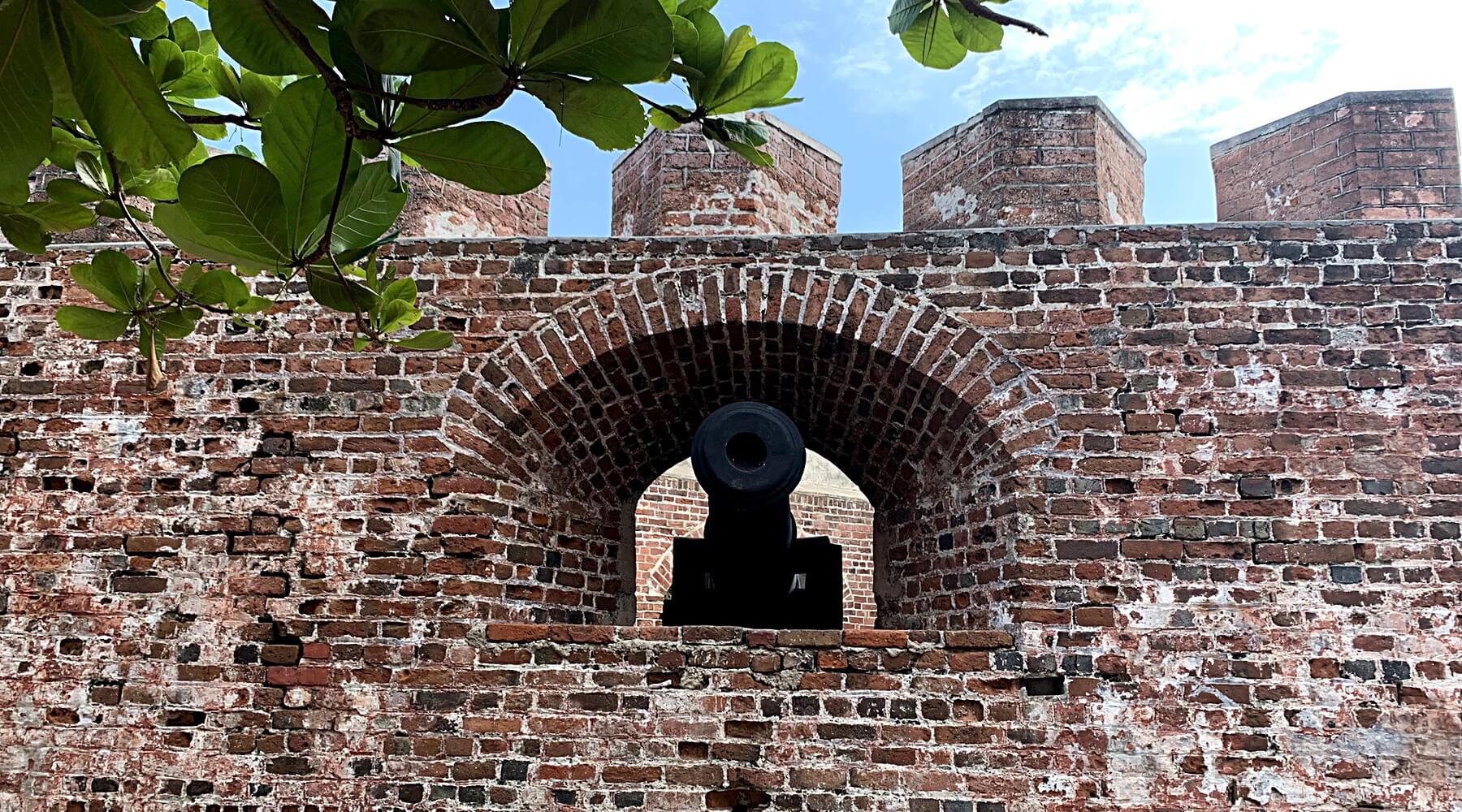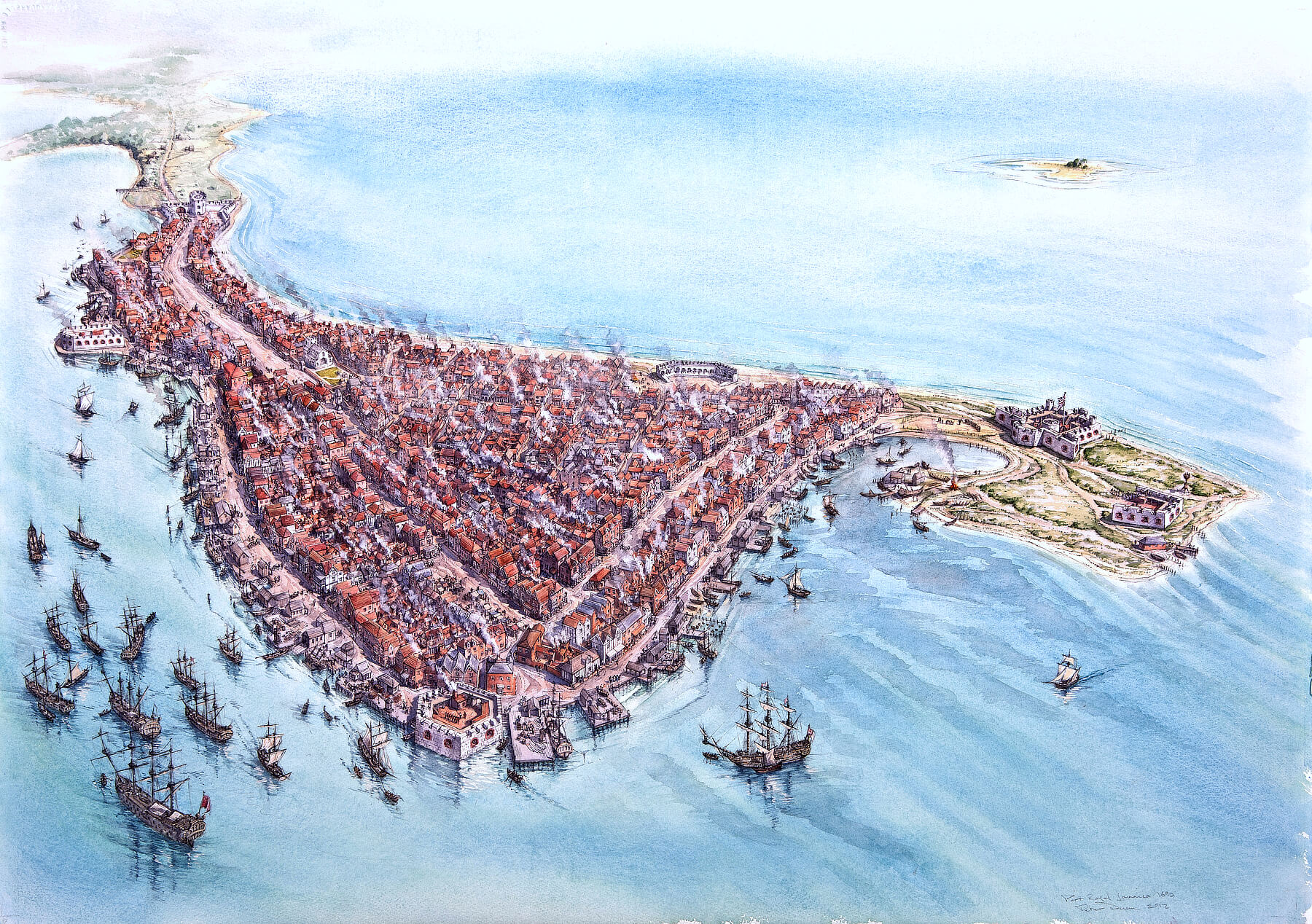


Boston, Massachusetts and Port Royal, Jamaica were the two largest English towns in the Americas in the late 17th century.
As one walks along the narrow streets of the poor fishing village of Port Royal today, it is hard to imagine that it was once the largest and most economically significant English settlement in the Americas. Or, that the town served as the headquarters of the Royal Navy in the Caribbean where Horatio Nelson, then a young Royal Navy officer, was stationed. Today, it is a sleepy fishing village across the bay from Kingston, at the end of a long and narrow peninsula, with a small population of Jamaican, who proudly view themselves as 'Port Royalists'.
Port Royal was the center of shipping commerce in Jamaica in the late 17th and early 18th centuries. During this time, it was a popular place for pirates and privateers from as far away as Madagascar on the far side of Africa, who brought and spent their treasure in a display of wealth and loose morals. Their presence was actively encouraged by the British as it provided a dual-benefit of discouraging attacks from the Spanish and the French as well as providing opportunity for local government officials to grow wealthy through collusion with the buccaneers.

Once called "the richest and wickedest city in the world", Port Royal was also the virtual capital of Jamaica. To it came men of all races, Treasures of silks, doubloons and gold from Spanish ships, looted on the high seas by the notorious "Brethren of the Coast" as the pirates were called. From here sailed the fleets of Henry Morgan, later lieutenant governor of Jamaica, for the sacking of Camaguey, Maracaibo and Panama -- and died here, despite the ministrations of his Jamaican folk-doctor. Admiral Lord Nelson and Benbow, the chilling "Blackbeard" Teach, were among its inhabitants. The Town flourished for 32 years until at 20 minutes to noon, June 7, 1692, it was partially buried in the sea by an earthquake.
Unlike most archaeological sites where civilizations evolve then disappear through the passage of time, or sites where buildings were built and later neglected or abandoned, eventually being destroyed and then possibly rebuilt; Port Royal is a city that existed in one minute and gone the next, perpetually frozen in the state it was, when disaster struck.

Around 11:43 on 7 June 1692, Port Royal was hit by a disastrous 7.5 magnitude earthquake. An estimated 2,000 persons were killed in an instant with an additional 3,000 citizens dying of injuries and disease across the island in the ensuing days. Two thirds of the city sank into the Caribbean Sea along with many inhabitants. Ships that were anchored within the harbor immediately sank. A large tidal wave engulfed the narrow spit of land that hosted the town, throwing ships on the streets and destroying buildings that were already damaged by the tremor.
Today the sunken city is considered one of the most important underwater archaeological site in the western hemisphere. The area is a historical treasure trove perpetually under study by various academic institutions. It belongs to a small group of sites that include Pompeii and Herculaneum in Italy, the Ozette Indian Village in the state of Washington. This group share a common fate; a natural disaster or event that causes "time to freeze". In these undisturbed sites, life in the past is revealed as it was then.
Port Royal's underwater city has been the subject of many studies. The most extensive was done over a period of 10 years in 1981 by Texas A&M University in conjunction with the Jamaica National Heritage Trust and the Institute of Nautical Archaeology. More on the archaeological work can be found here.
Port Royal underwent a major rebuilding initative in the years following the earthquake, only to be ravaged by fire six years later in 1703. The painting below is a reconstruction of what the town would have looked like after it was rebuilt in 1840. Today, after centuries of earthquakes and hurricanes, it is an even smaller version of what is depicted below.

The town experienced two more earthquakes in 1722 but was again devastated by another, at around 3:30pm on January 14, 1907. The massive earthquake measuring an estimated 9.5 on the Richter scale destroyed many buildings in Kingston and Port Royal. The Royal Artillery House for the Victoria Battery in Port Royal, shown below, sank into the sand and has remained like that since. Today it is an attraction called the "Giddy House".

Today, the small town is experiencing a renaissance. A new cruise ship terminal has been built, opening up the area to day trips from the cruise ships . The first cruise ship, the Marella Discovery II, with approximately 2,000 guests aboard, visited the new terminal on January 20, 2020.
Fort Charles has undergone a major renovation and is now open to visitors. Guided tours are available, and visitors can now view the port reconstruction of the buildings and quarters of the commanding officer shown below.
